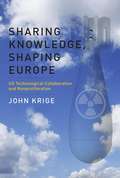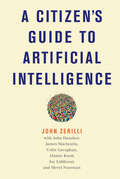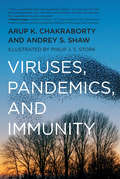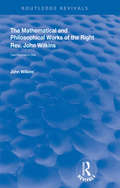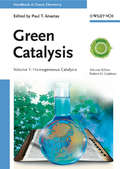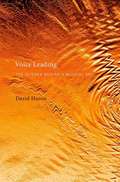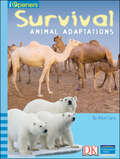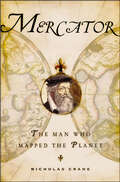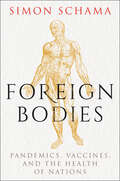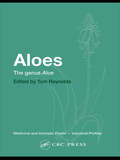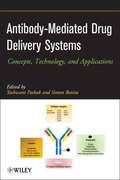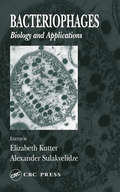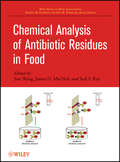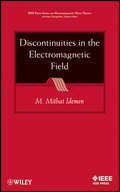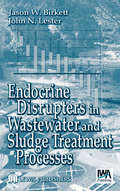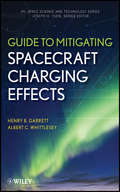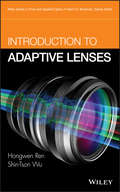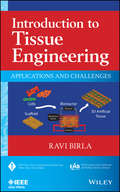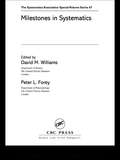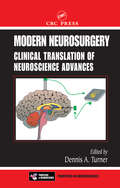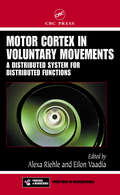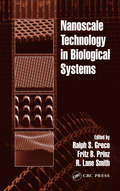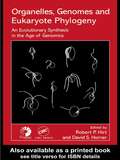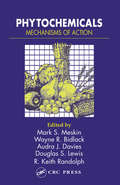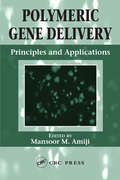- Table View
- List View
Sharing Knowledge, Shaping Europe: US Technological Collaboration and Nonproliferation
by John KrigeIn the 1950s and the 1960s, U.S. administrations were determined to prevent Western European countries from developing independent national nuclear weapons programs. To do so, the United States attempted to use its technological pre-eminence as a tool of "soft power" to steer Western European technological choices toward the peaceful uses of the atom and of space, encouraging options that fostered collaboration, promoted nonproliferation, and defused challenges to U.S. technological superiority. In Sharing Knowledge, Shaping Europe, John Krige describes these efforts and the varying degrees of success they achieved. Krige explains that the pursuit of scientific and technological leadership, galvanized by America's Cold War competition with the Soviet Union, was also used for techno-political collaboration with major allies. He examines a series of multinational arrangements involving shared technological platforms and aimed at curbing nuclear proliferation, and he describes the roles of the Department of State, the Atomic Energy Commission, and NASA. To their dismay, these agencies discovered that the use of technology as an instrument of soft power was seriously circumscribed, by internal divisions within successive administrations and by external opposition from European countries. It was successful, Krige argues, only when technological leadership was embedded in a web of supportive "harder" power structures.
A Citizen's Guide to Artificial Intelligence
by John ZerilliA concise but informative overview of AI ethics and policy.Artificial intelligence, or AI for short, has generated a staggering amount of hype in the past several years. Is it the game-changer it's been cracked up to be? If so, how is it changing the game? How is it likely to affect us as customers, tenants, aspiring home-owners, students, educators, patients, clients, prison inmates, members of ethnic and sexual minorities, voters in liberal democracies? This book offers a concise overview of moral, political, legal and economic implications of AI. It covers the basics of AI's latest permutation, machine learning, and considers issues including transparency, bias, liability, privacy, and regulation.
Viruses, Pandemics, and Immunity
by Arup K. Chakraborty Andrey ShawHow viruses emerge to cause pandemics, how our immune system combats them, and how diagnostic tests, vaccines, and antiviral therapies work.Throughout history, humans have contended with pandemics. History is replete with references to plagues, pestilence, and contagion, but the devastation wrought by pandemics had been largely forgotten by the twenty-first century. Now, the enormous human and economic toll of the rapidly spreading COVID-19 disease offers a vivid reminder that infectious disease pandemics are one of the greatest existential threats to humanity. This book provides an accessible explanation of how viruses emerge to cause pandemics, how our immune system combats them, and how diagnostic tests, vaccines, and antiviral therapies work-- concepts that are a foundation for our public health policies.
The Mathematical and Philosophical Works of the Right Rev. John Wilkins (Routledge Revivals)
by John WilkinsOriginally published in 1708, this volume is an exact facsimile reproduction the 1802 edition of The Mathematical and Philosophical Works of the Right Rev. John Wilkins, and includes an index, added for the 1970 new impression. The book includes the works of Bishop John Wilkins, as well as a note on the life of the author; Bishop John Wilkins, as Warden of Wadham Colelge, Oxford and Master of Trinity College Cambridge, played a major role in the revitalization of British university education in the middle of the seventeenth century. Moreover, he was a prime mover in the establishment of the Royal Society of London and was its first secretary.
Handbook of Green Chemistry, Green Catalysis, Homogeneous Catalysis
by Paul T. Anastas Robert H. CrabtreeThe shift towards being as environmentally-friendly as possible has resulted in the need for this important volume on homogeneous catalysis. Edited by the father and pioneer of Green Chemistry, Professor Paul Anastas, and by the renowned chemist, Professor Robert Crabtree, this volume covers many different aspects, from industrial applications to atom economy. It explains the fundamentals and makes use of everyday examples to elucidate this vitally important field.An essential collection for anyone wishing to gain an understanding of the world of green chemistry, as well as for chemists, environmental agencies and chemical engineers. The Handbook of Green Chemistry comprises of 9 volumes in total, split into 3 subject-specific sets. The three sets are available individually. All 9 volumes are available individually, too.Set I: Green Catalysis - Volume 1: Homogeneous Catalysis - Volume 2: Heterogeneous Catalysis - Volume 3: BiocatalysisSet II: Green Solvents - Volume 4: Supercritical Solvents - Volume 5: Reactions in Water - Volume 6: Ionic LiquidsSet III: Green Processes - Volume 7: Green Synthesis - Volume 8: Green Nanoscience - Volume 9: Designing Safer ChemicalsThe Handbook of Green Chemistry is also available as Online Edition.PodcastsListen to two podcasts in which Professor Paul Anastas and Journals Editor Paul Trevorrow discuss the origin and expansion of Green Chemistry and give an overview of The Handbook of Green Chemistry.
Voice Leading: The Science behind a Musical Art
by David HuronVoice leading is the musical art of combining sounds over time. In this book, David Huron offers an accessible account of the cognitive and perceptual foundations for this practice. Drawing on decades of scientific research, including his own award-winning work, Huron offers explanations for many practices and phenomena, including the perceptual dominance of the highest voice, chordal-tone doubling, direct octaves, embellishing tones, and the musical feeling of sounds "leading" somewhere. Huron shows how traditional rules of voice leading align almost perfectly with modern scientific accounts of auditory perception. He also reviews pertinent research establishing the role of learning and enculturation in auditory and musical perception.Voice leading has long been taught with reference to Baroque chorale-style part-writing, yet there exist many more musical styles and practices. The traditional emphasis on Baroque part-writing understandably leaves many musicians wondering why they are taught such an archaic and narrow practice in an age of stylistic diversity. Huron explains how and why Baroque voice leading continues to warrant its central pedagogical status. Expanding beyond choral-style writing, Huron shows how established perceptual principles can be used to compose, analyze, and critically understand any kind of acoustical texture from tune-and-accompaniment songs and symphonic orchestration to jazz combo arranging and abstract electroacoustic music. Finally, he offers a psychological explanation for why certain kinds of musical textures are more likely to be experienced by listeners as pleasing.
iOpener: Survival: Animal Adaptations (iOpeners)
by Alice CaryThis book covers everything you need to know about how all kinds of animals adapt in various habitats. Diagrams, fun fact boxes, and photographs bring the subject to life, while a glossary, an index, and discussion questions aid in reading comprehension.Grade: 5Subject: Life ScienceGenre: Informational TextComprehension Skill/Strategy: Make InferencesDiagnostic Reading Assessment (DRA/EDL): 50Guided Reading Level: ULexile Level: 880LDK's iOpeners equip K-6 students with the skills and strategies they need to access and comprehend nonfiction so that they are not only learning to read but reading to learn. The combination of high-interest content and eye-popping photography of iOpeners brings science and social studies topics to life, raises student achievement in reading, and boosts standardized test scores.
Mercator: The Man Who Mapped the Planet
by Nicholas CraneAn enthralling biography of the man who created the first real map of the world and changed civilizationBorn at the dawn of the age of discovery, Gerhard Mercator lived in an era of formidable intellectual and scientific advances. At the center of these developments were the cartographers who painstakingly pieced together the evidence to create ever more accurate pictures of the planet. Mercator was the greatest of all of them-a poor farm boy who attended one of Europe's top universities, was persecuted and imprisoned by the Inquisition, but survived to coin the term "atlas" and to produce the so-called projection for which he is known. Devoutly religious, yet gripped by Aristotelian science, Mercator struggled to reconcile the two, a conflict mirrored by the growing clash in Europe between humanism and the Church.Mercator solved the dimensional riddle that had vexed cosmographers for so long: How could the three-dimensional globe be converted into a two-dimensional map while retaining true compass bearings? The projection revolutionized navigation and has become the most common worldview.Nicholas Crane-a fellow geographer-has combined a keen eye for historical detail with a gift for vivid storytelling to produce a masterful biography of the man who mapped the planet.
Foreign Bodies: Pandemics, Vaccines, and the Health of Nations
by Simon SchamaA vibrant cultural history investigating the tangled and complex history of pandemics and vaccines, by bestselling author and historian Simon SchamaCities and countries engulfed by panic and death, desperate for vaccines but fearful of what inoculation may bring. This is what the world has just gone through with Covid-19. But as Simon Schama shows in his epic history of vulnerable humanity caught between the terror of contagion and the ingenuity of science, it has happened before. Characteristically, Schama’s message is delivered through gripping, page-turning stories set in the eighteenth and nineteenth centuries: smallpox strikes London; cholera hits Paris; plague comes to India. Threading through the scenes of terror, suffering and hope – in hospitals and prisons, palaces, and slums – are an unforgettable cast of characters: a philosopher-playwright burning up with smallpox in a country chateau; a vaccinating doctor paying house calls in Halifax; a woman doctor in south India driving her inoculator-carriage through the stricken streets as dead monkeys drop from the trees. But we are also in the labs when great, life-saving breakthroughs happen, in Paris, Hong Kong, and Mumbai. At the heart of it all is an unsung hero: Waldemar Haffkine, a gun-toting Jewish student in Odesa turned microbiologist at the Pasteur Institute, hailed in England as “the saviour of mankind” for vaccinating millions against cholera and bubonic plague in British India while being cold-shouldered by the medical establishment of the Raj. Creator of the world’s first mass production line of vaccines in Mumbai, he is tragically brought down in an act of shocking injustice. Foreign Bodies crosses borders between east and west, Asia and Europe, the worlds of rich and poor, politics and science. Its thrilling story carries with it the credo of its author on the interconnectedness of humanity and nature; of the powerful and the people. Ultimately, Schama says, as we face the challenges of our times together, “there are no foreigners, only familiars.”
Aloes: The genus Aloe (Medicinal And Aromatic Plants S. - Industrial Profiles Ser. #Vol. 35)
by Tom ReynoldsAloes are a large genus of plants, about 450 species, from sub-Saharan Africa, Madagascar, and parts of Arabia. Many species are widespread in warm or tropical semi-arid regions, yet the distribution of others is limited to a few living in desert or wet mountainous regions. While some species have been adopted as medicinal plants since ancient time
Antibody-Mediated Drug Delivery Systems
by Yashwant Pathak Simon BenitaThis book covers various aspects of antibody mediated drug delivery systems - theoretical aspects, processing, viral and non-viral vectors, and fields where these systems find and /or are being evaluated for applications as therapeutics and diagnostic treatment. Chapters discuss actual applications of techniques used for formulation and characterization. Applications areas include cancer, pulmonary, ocular diseases; brain drug delivery; and vaccine delivery. The contributing authors represent over 10 different countries, covering recent developments happening around the globe.
Bacteriophages: Biology and Applications
by Elizabeth Kutter Alexander SulakvelidzeIn response to the emergence of pathogenic bacteria that cannot be treated with current antibiotics, many researchers are revisiting the use of bacteriophages, or phages, to fight multidrug-resistant bacteria. Bacteriophages: Biology and Applications provides unparalleled, comprehensive information on bacteriophages and their applications, such as
Chemical analysis of antibiotic residues in food
by Jian Wang James D. Macneil Jack F. KayAn insightful exploration of the key aspects concerning the chemical analysis of antibiotic residues in food The presence of excess residues from frequent antibiotic use in animals is not only illegal, but can pose serious health risks by contaminating products for human consumption such as meat and milk. Chemical Analysis of Antibiotic Residues in Food is a single-source reference for readers interested in the development of analytical methods for analyzing antibiotic residues in food. It covers themes that include quality assurance and quality control, antibiotic chemical properties, pharmacokinetics, metabolism, distribution, food safety regulations, and chemical analysis. In addition, the material presented includes background information valuable for understanding the choice of marker residue and target animal tissue to use for regulatory analysis. This comprehensive reference: Includes topics on general issues related to screening and confirmatory methods Presents updated information on food safety regulation based on routine screening and confirmatory methods, especially LC-MS Provides general guidance for method development, validation, and estimation of measurement uncertainty Chemical Analysis of Antibiotic Residues in Food is written and organized with a balance between practical use and theory to provide laboratories with a solid and reliable reference on antibiotic residue analysis. Thorough coverage elicits the latest scientific findings to assist the ongoing efforts toward refining analytical methods for producing safe foods of animal origin.
Discontinuities in the electromagnetic field
by Idemen M. MithatA multifaceted approach to understanding, calculating, and managing electromagnetic discontinuities Presenting new, innovative approaches alongside basic results, this text helps readers better understand, calculate, and manage the discontinuities that occur within the electromagnetic field. Among the electromagnetic discontinuities explored in this volume are: Bounded jump discontinuities at the interfaces between two media or on the material sheets that model very thin layers Unbounded values at the edges of wedge-type structures Unbounded values at the tips of conical structures The text examines all the key issues related to the bodies that carry the interfaces, edges, or tips, whether these bodies are at rest or in motion with respect to an observer. In addition to its clear explanations, the text offers plenty of step-by-step examples to clarify complex theory and calculations. Moreover, readers are encouraged to fine-tune their skills and knowledge by solving the text's problem sets. Three fundamental, classical theories serve as the foundation for this text: distributions, confluence, and the special theory of relativity. The text sets forth the fundamentals of all three of these theories for readers who are not fully familiar with them. Moreover, the author demonstrates how to solve electromagnetic discontinuity problems by seamlessly combining all three theories into a single approach. With this text as their guide, readers can apply a unique philosophy and approach to the investigation and development of structures that have the potential to enhance the capabilities of electronics, antennas, microwaves, acoustics, medicine, and many more application areas.
Endocrine Disrupters in Wastewater and Sludge Treatment Processes
by Jason W. Birkett John N. LesterEndocrine Disrupting Chemicals (EDCs) have been shown to produce changes in the endocrine system of organisms, leading to increases in cancers and abnormalities in reproductive structure and function. This book presents research on the endocrine-disrupting effects of sewage and industrial effluents, covering the sources, fate, and transport of EDCs
Guide to Mitigating Spacecraft Charging Effects
by Henry B. Garrett Albert C. WhittleseyThe definitive guide to the modern body of spacecraft charging knowledge--from first principles for the beginner to intermediate and advanced conceptsThe only book to blend the theoretical and practical aspects of spacecraft charging, Guide to Mitigating Spacecraft Charging Effects defines the environment that not only creates the aurora, but which also can have significant effects on spacecraft, such as disruption of science measurements and solar arrays from electrostatic discharge (ESD). It describes in detail the physics of the interaction phenomenon as well as how to construct spacecraft to enhance their survivability in the harsh environment of space.Combining the authors' extensive experience in spacecraft charging--and in their provision of design support to NASA, JPL, the commercial satellite market, and numerous other projects--this incredible book offers both a robust physics background and practical advice for neophytes in the field and experienced plasma physicists and spacecraft engineers.In addition to containing numerous equations, graphs, tables, references, and illustrations, Guide to Mitigating Spacecraft Charging Effects covers:Solar cell technology, especially higher voltage arrays, and the new design approaches that are appropriate for themInformation about the space plasma environmentNew analytic computer codes to analyze spacecraft chargingSpacecraft anomalies and failures which emphasized designs that are of greater importance than others
Introduction to adaptive lenses
by Shin-Tson Wu Hongwen RenPresents readers with the basic science, technology, and applications for every type of adaptive lens An adaptive lens is a lens whose shape has been changed to a different focal length by an external stimulus such as pressure, electric field, magnetic field, or temperature. Introduction to Adaptive Lenses is the first book ever to address all of the fundamental operation principles, device characteristics, and potential applications of various types of adaptive lenses. This comprehensive book covers basic material properties, device structures and performance, image processing and zooming, optical communications, and biomedical imaging. Readers will find homework problems and solutions included at the end of each chapter--and based on the described device structures, they will have the knowledge to fabricate adaptive lenses for practical applications or develop new adaptive devices or concepts for advanced investigation. Introduction to Adaptive Lenses includes chapters on: Optical lenses Elastomeric membrane lenses Electro-wetting lenses Dielectrophoretic lenses Mechanical-wetting lenses Liquid crystal lenses This is an important reference for optical engineers, research scientists, graduate students, and undergraduate seniors.
Introduction to Tissue Engineering
by Ravi BirlaCovering a progressive medical field, Tissue Engineering describes the innovative process of regenerating human cells to restore or establish normal function in defective organs. As pioneering individuals look ahead to the possibility of generating entire organ systems, students may turn to this textbook for a comprehensive understanding and preparation for the future of regenerative medicine. This book explains chemical stimulations, the bioengineering of specific organs, and treatment plans for chronic diseases. It is a must-read for tissue engineering students and practitioners.
Milestones in Systematics
by David M. Williams Peter L. ForeyPresenting a historical analysis of the evolution of systematics during the last one hundred years, Milestones in Systematics reviews many of the major issues in systematic theory and practice that have driven the working methods of systematics during the 20th century and looks at the issues most likely to preoccupy systematists in the immediate fu
Modern Neurosurgery: Clinical Translation of Neuroscience Advances
by Dennis A.Turner M.A.Focusing on how increased understanding of brain function affects clinical neuroscience, this incisive text explores the interface between neuroscience and clinical neuroscience advances by examining the hypotheses that drive this evolution. The author reviews the relevant underpinnings of new neurosurgical techniques, treatments, and conceptual ap
Motor Cortex in Voluntary Movements: A Distributed System for Distributed Functions
by Alexa Riehle Eilon VaadiaAs one of the first cortical areas to be explored experimentally, the motor cortex continues to be the focus of intense research. Motor Cortex in Voluntary Movements: A Distributed System for Distributed Functions presents developments in motor cortex research, making it possible to understand and interpret neural activity and use it to recons
Nanoscale Technology in Biological Systems
by Ralph S. Greco Fritz B. Prinz R. Lane SmithNanoscale Technology in Biological Systems reviews recent accomplishments in the field of nanobiology and introduces the application of nanoscale matrices to human biology. It focuses on the applications of nanotechnology fabrication to biomedical devices and discusses new physical methods for cell isolation and manipulation and intracellular commu
Organelles, Genomes and Eukaryote Phylogeny: An Evolutionary Synthesis in the Age of Genomics
by Robert P. Hirt David S. HornerThe recent revolution in molecular biology has spread through every field of biology including systematics and evolution. Researchers can now analyze the genomes of different species relatively quickly, and this is generating a great deal of data and theories about relationships between taxa as well as how they originated and diversified. Org
Phytochemicals: Mechanisms of Action
by Mark S. Meskin Wayne R. Bidlack Audra J. Davies Douglas S. Lewis R. Keith RandolphPhytochemicals: Mechanisms of Action is the latest volume in a highly regarded series that addresses the roles of phytochemicals in disease prevention and health promotion. The text, an ideal tool for scientists and researchers in the fields of functional foods and nutraceuticals, links diets rich in plant-derived compounds, such as fruit, vegetabl
Polymeric Gene Delivery: Principles and Applications
by Mansoor M. AmijiTo treat disease or correct genetic disorders using gene therapy, the most suitable vehicle must be able to deliver genes to the appropriate tissues and cells in the body in a specific as well as safe and effective manner. While viruses are the most popular vehicles to date, their disadvantages include toxicity, limited size of genes they can carry
